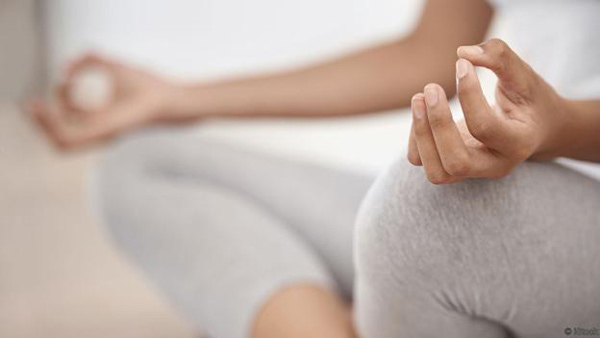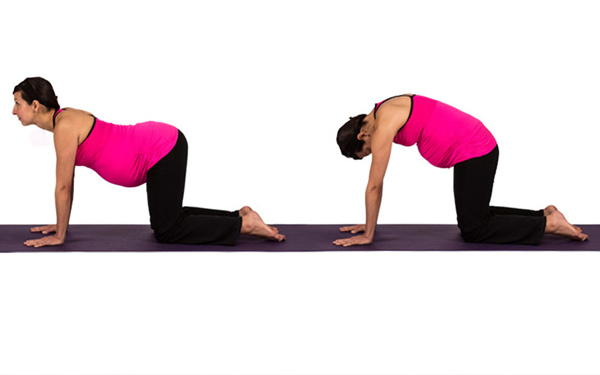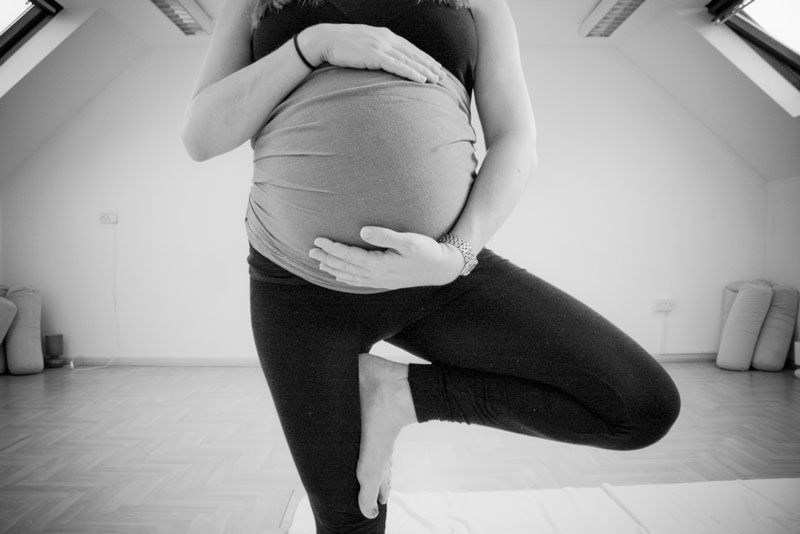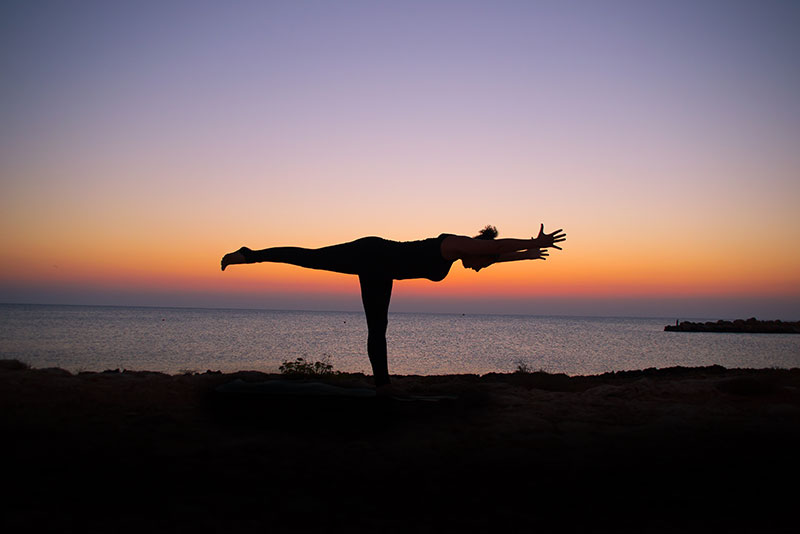Prenatal Yoga has proven benefits for expectant mums, helping to relieve pain, build stamina, relax the body and the mind and support mother-to-be both physically and emotionally.
Focusing on creating space in the body to make room for the growing baby, pregnancy yoga also helps to keep the muscles strong and supple during your term, ensuring you will maintain your balance, core strength, flexibility and resilience.
And the cherry on the cake, by practising yoga at The Centre during your pregnancy, you can prepare the body for labour both mentally and physically, possibly even encouraging the cervix to dilate and the hips to be strong and open.
Here are The Centre’s top four positions for expectant mother to practise safely during pregnancy.
Arms Crossed in Easy Pose
Despite the name, Easy Pose, or Sukhasana can be both intense and therapeutic for expectant mothers-to-be. A great way to start or end a prenatal yoga session, this pose can be meditative, helping to rest and relax the body and allow for deeper breathing, while also gently opening the hips and relieving tension in the shoulders.
To do the Easy Pose, sit on the floor, ideally on a cusion or a block, allowing your hips to be raised slightly, and cross your legs, making sure that your knees are no further distance than the length of your thigh, with your weight equally divided between your sits bones and your spine straight. Rest your hands on your knees with your palms facing upwards, close your eyes and take a few breaths deep breaths. On the next inhale, reach your arms behind your back and cross your arms behind your back. Hold for a four breaths before gently releasing. Repeat with the arms crossed the other way.

Cat and Cow Pose
The added weight you carry during pregnancy can cause pain and discomfort in the lower and upper back, but gently flowing between the Cat and Cow poses or Marjariasana and Bitilasana can help warm up and gently stretch the spine, whilst strengthening the muscles in the andomen and the back. It can also shift the weight of the baby away from your spine and reduce the pressure on your hips and back. This pose has the added benefit of encouraging the baby to move into the optimal position for labour.
To get into Cat and Cow, start on your hands and knees, with your wrists aligned with your shoulders and your knees below your hips, and slightly wider than hips width. As you inhale lift your head and chest keeping your shoulders away from your ears, at the same time lift your tailbone to the ceiling. On the exhale, draw your belly button in release your chin and tailbone down towards the ground. Repeat to the natural rhythm of your breath.

Child Pose
Every yogi loves the deeply relaxing Child Pose or Balasana. Giving pregnant mothers-to-be the chance to rest, regroup and relax, Child Pose also helps to stretch the lower back, while allowing a moment of stillness and an opportunity to focus on the breath.
To feel the benefits of Child Pose, start on your hands and knees then sit back, resting your bum on your heels. Now raise your arms above your head resting them on the floor, relax and breathe.
.jpg)
Tree Pose
During pregnancy your balance, posture and centre of gravity can all shift and change as your belly grows. By practising the Tree Pose of Vrksasana you can regain your balance and improve your posture. A good hip opener, the Tree Pose can also help relieve pain in the lower abdomen and pelvis and can build stamina for labour.
To take advantage of the Tree pose, start standing (Tadasana) with both feet firmly on the ground, shift your weight to the right foot and slowly lift the left foot to rest on your lower leg, once you are comfortable and balanced raise the left leg up to res the foot on the upper thigh. Hold on to a chair or table if you need to until you feel balanced, then press your palms together in the prayer position and breathe.



